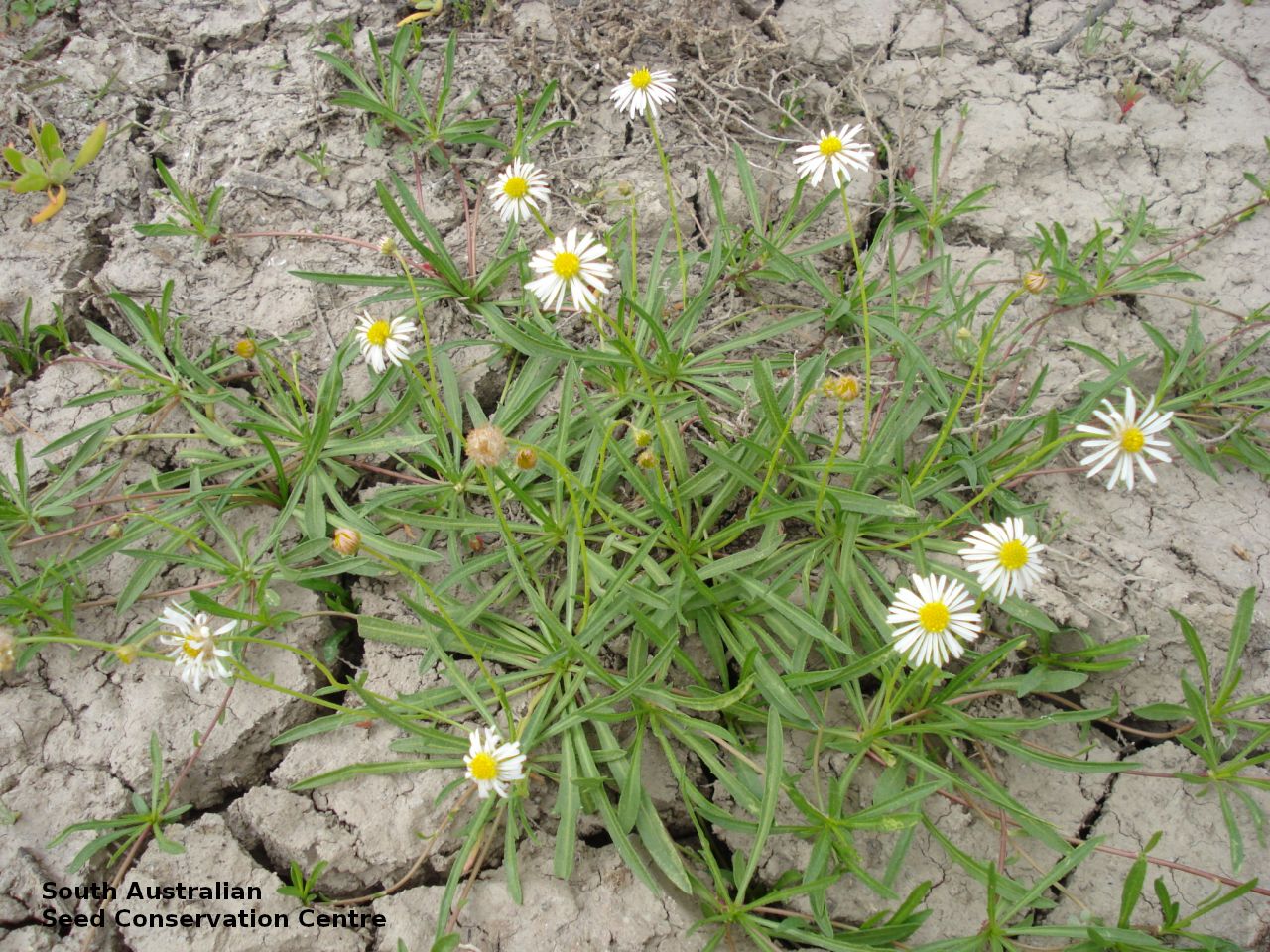
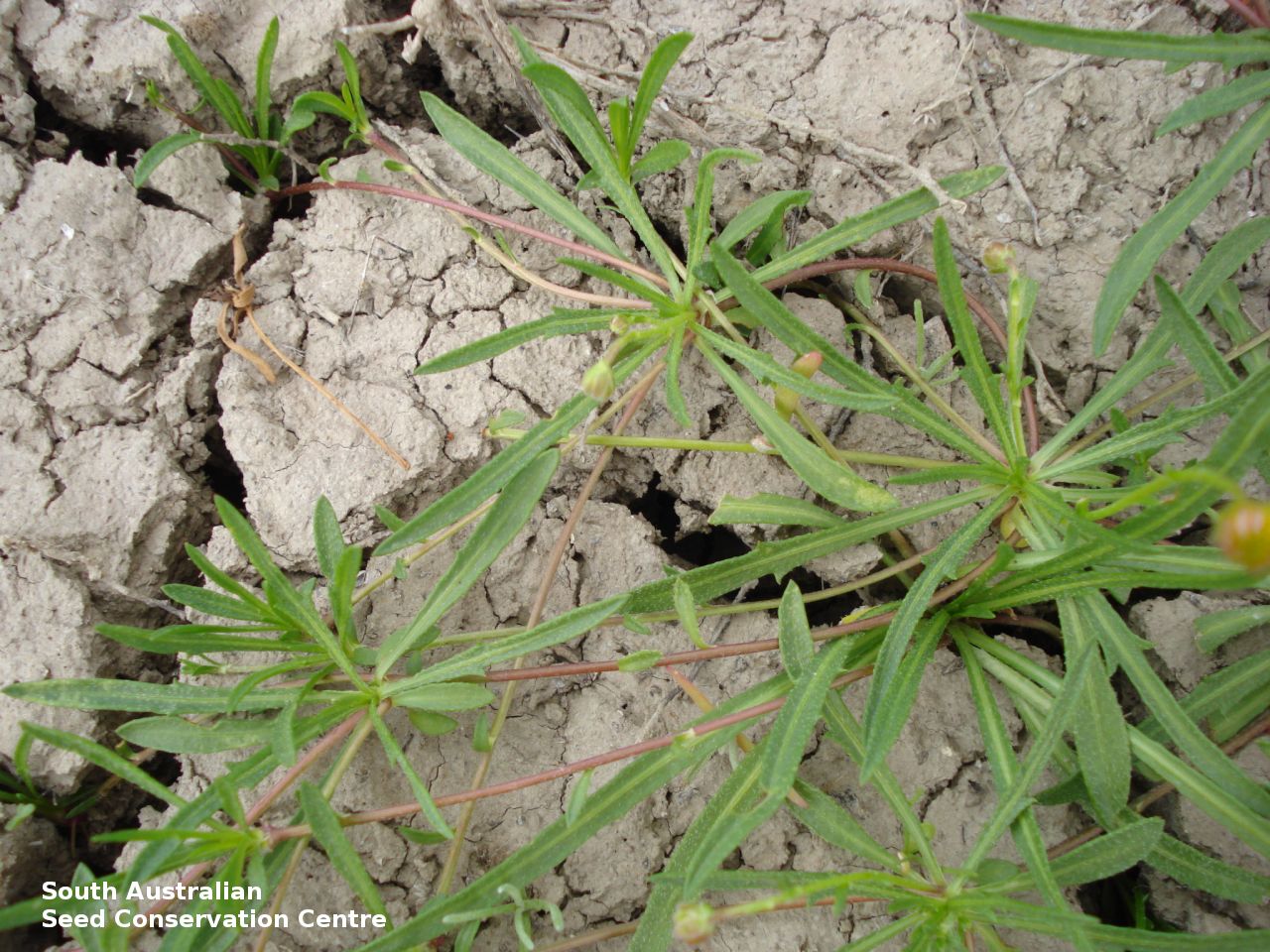
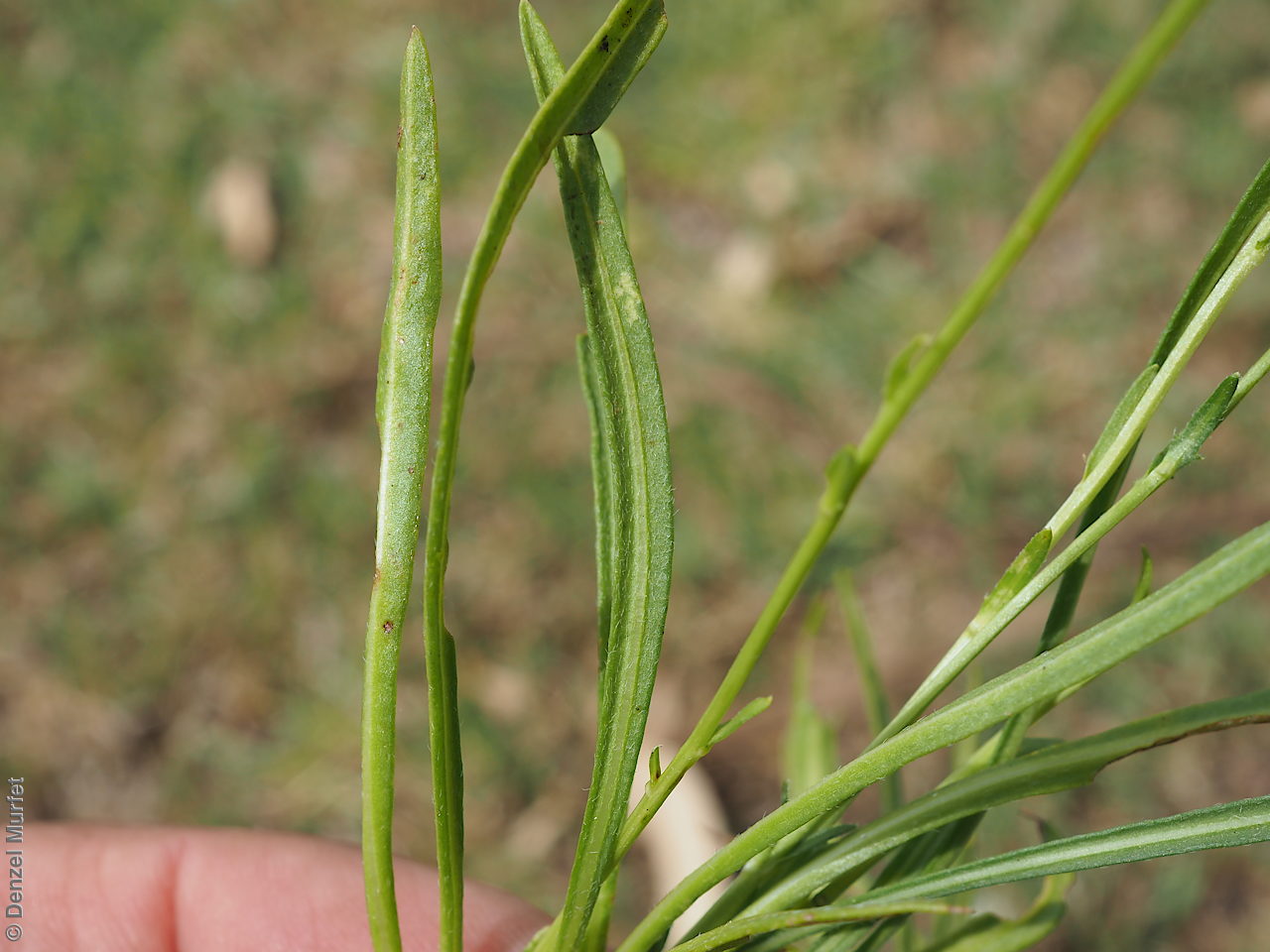
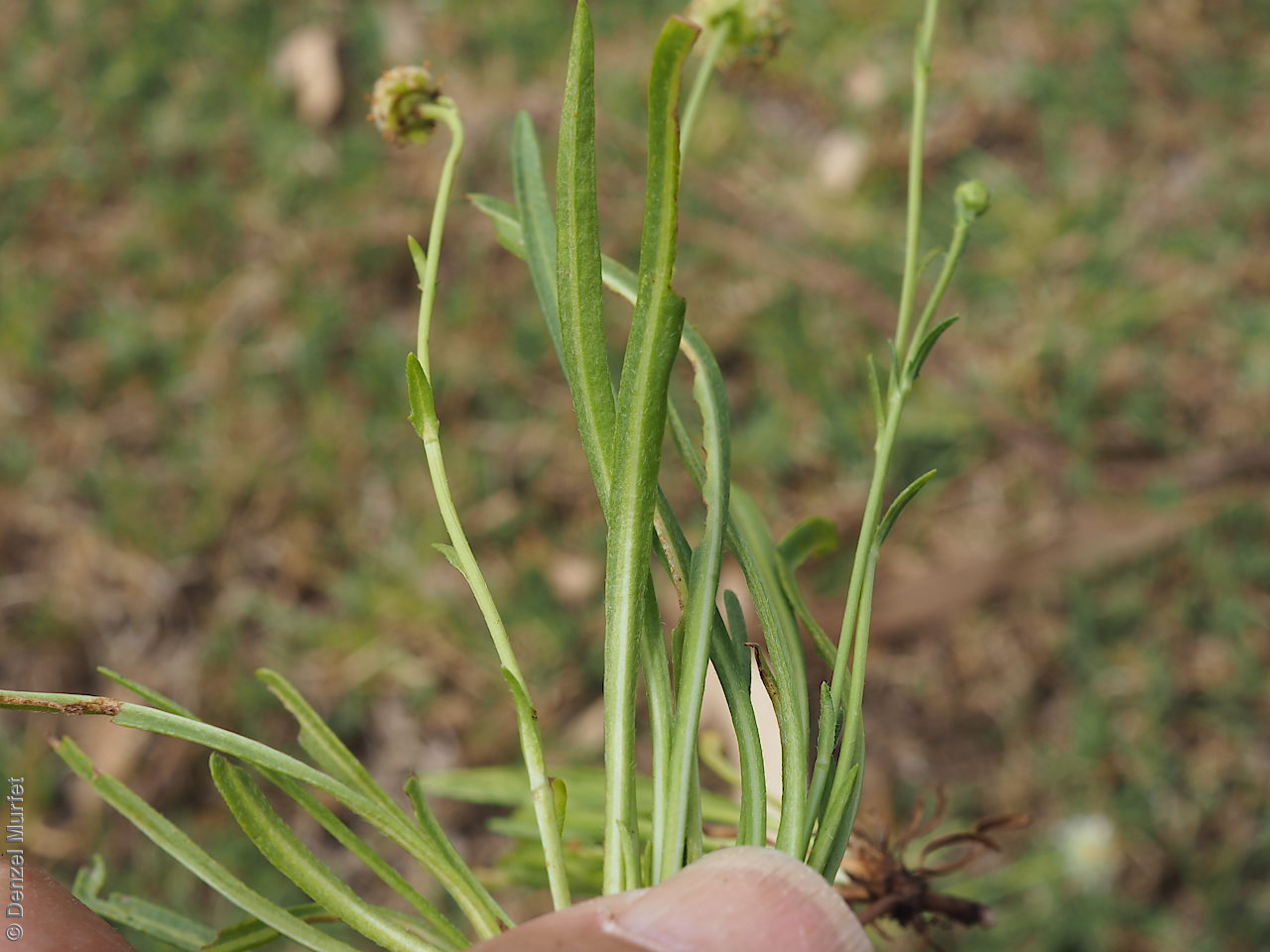
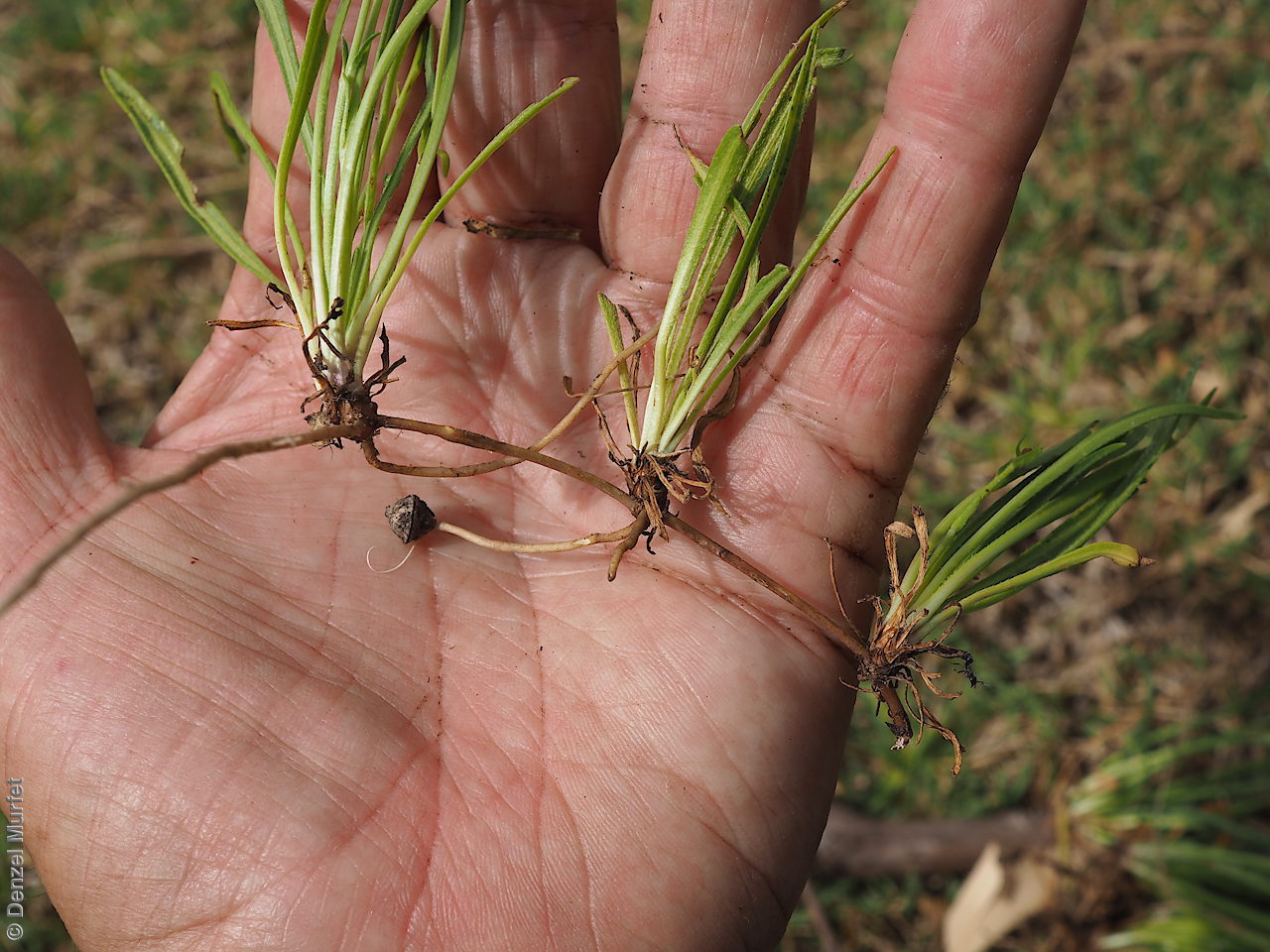
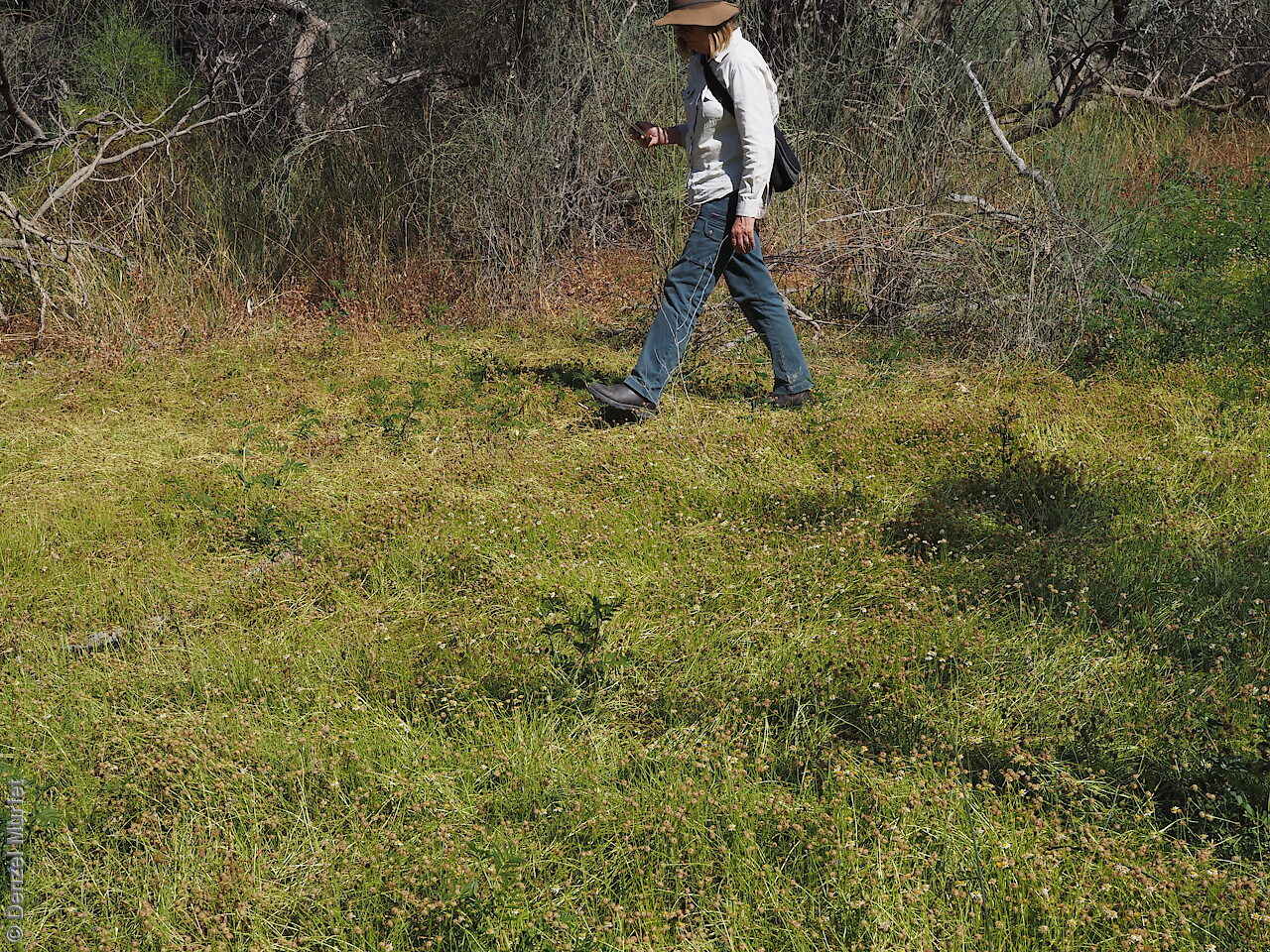
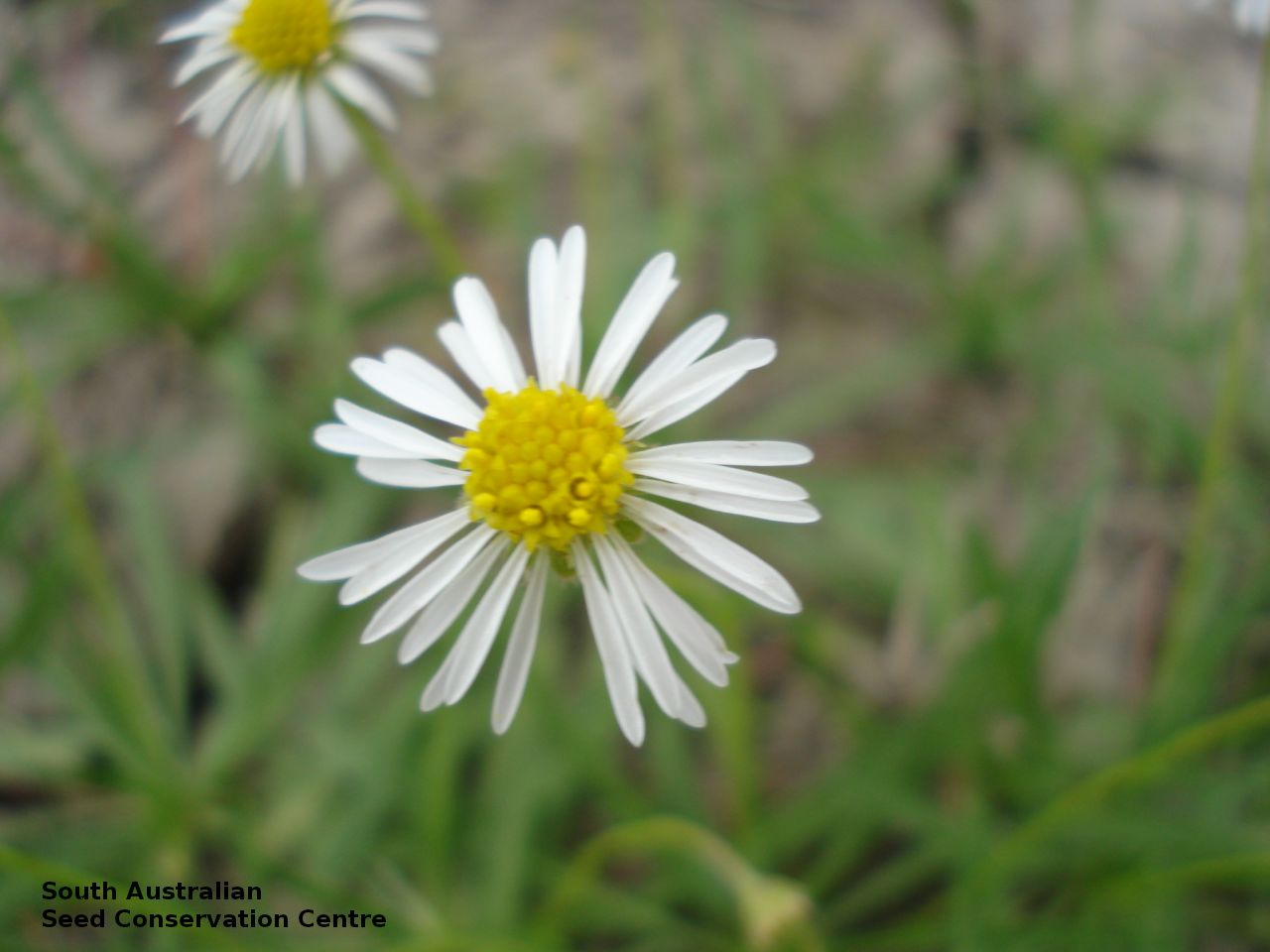
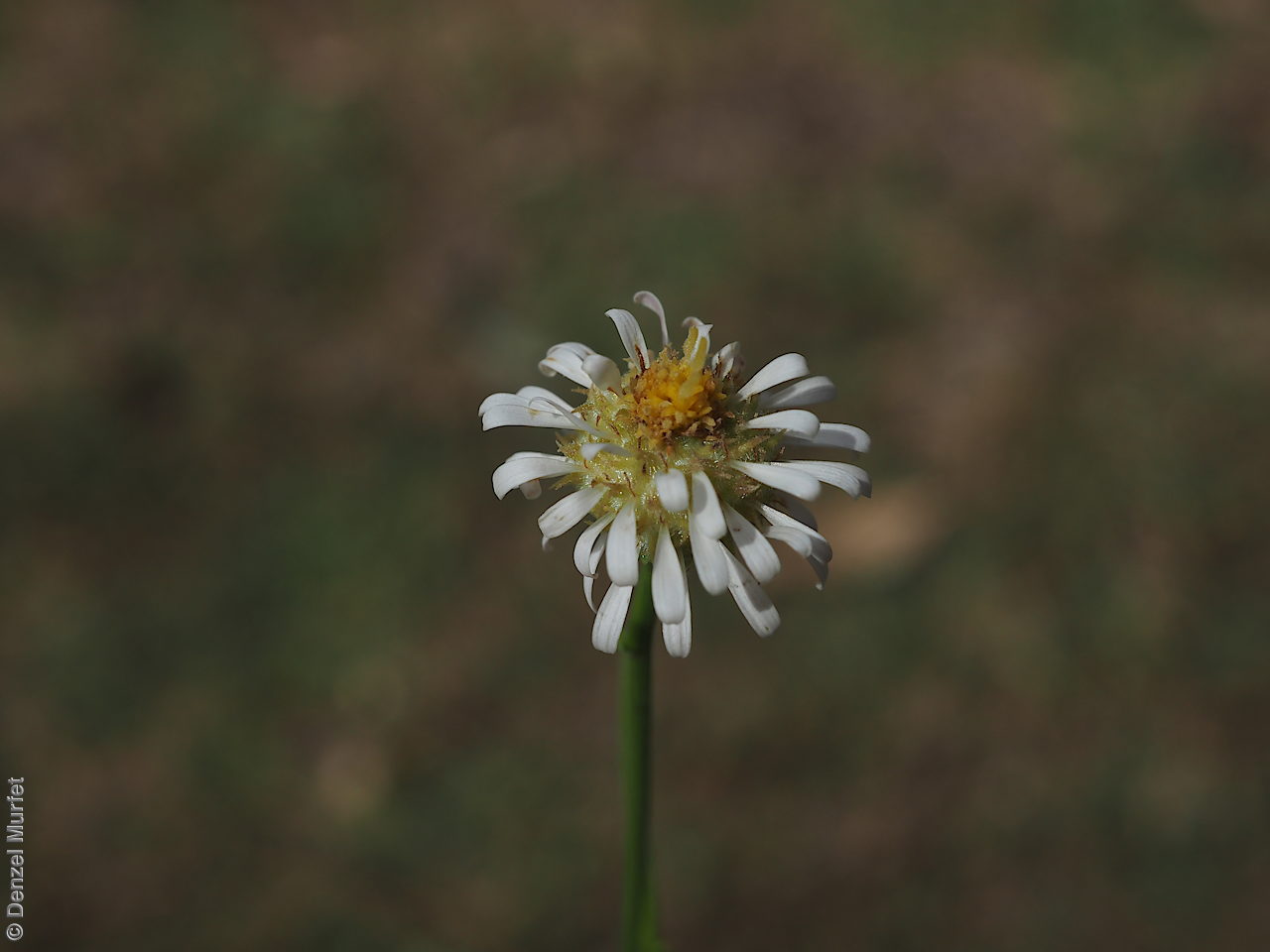
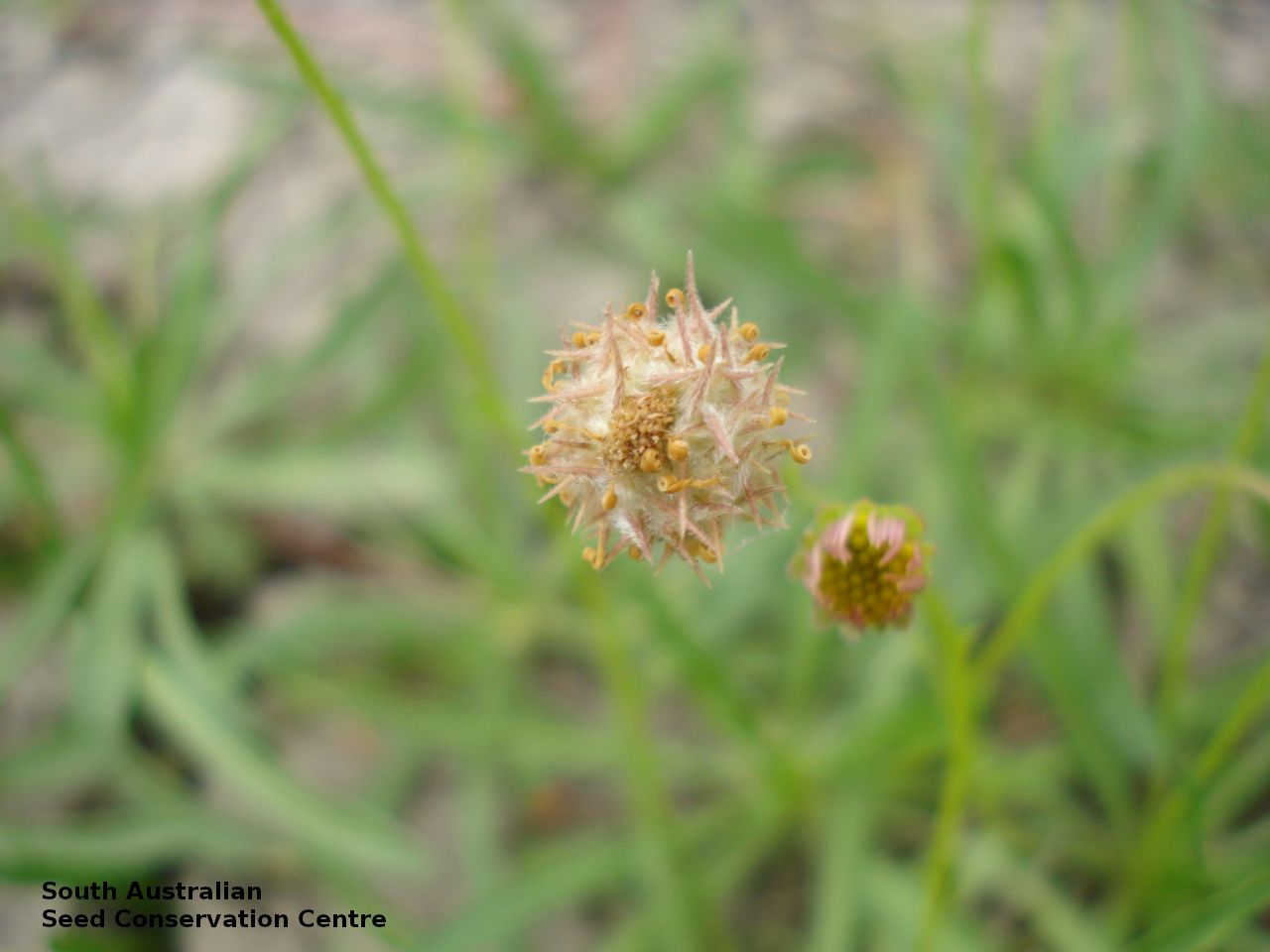
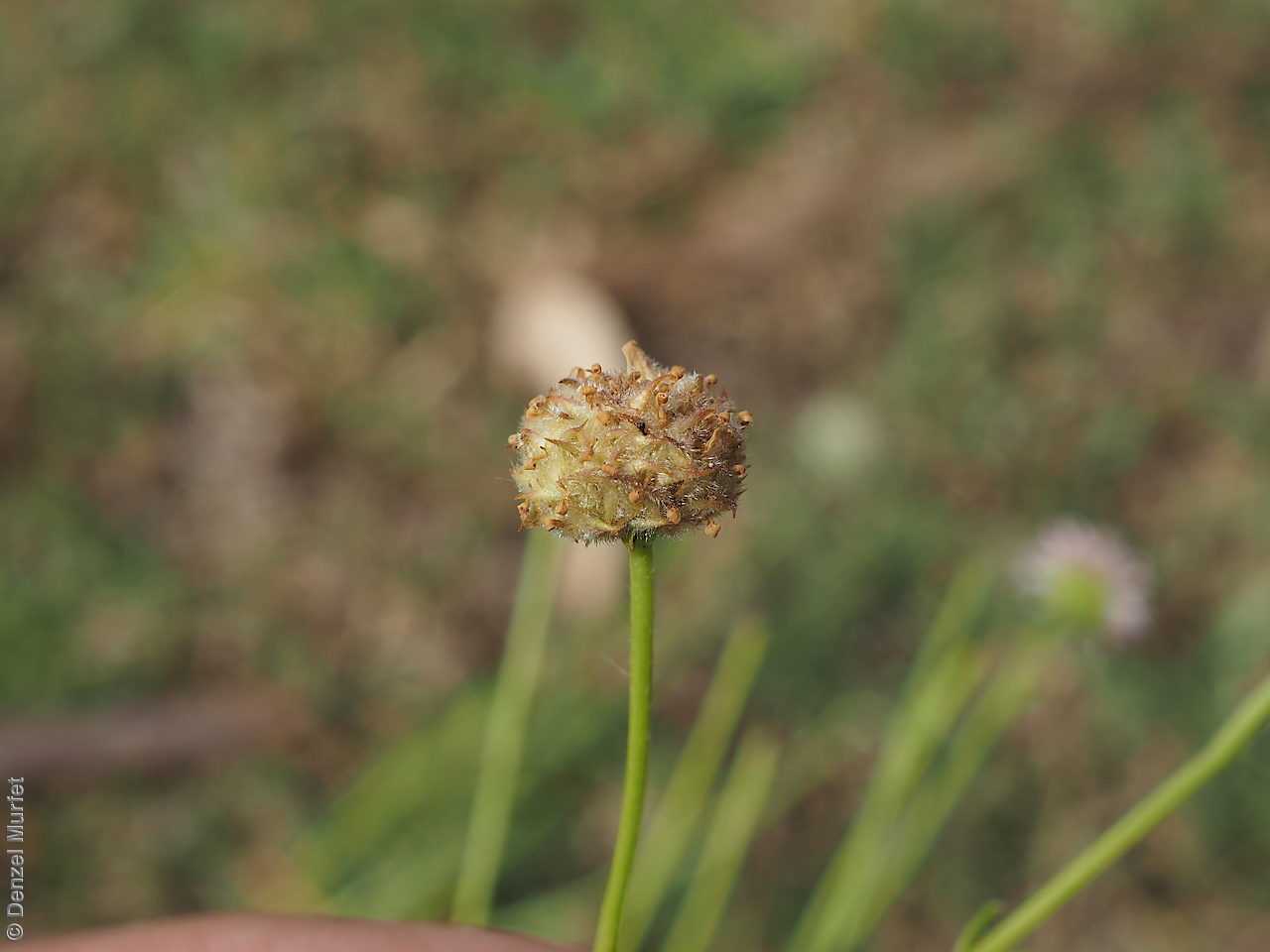
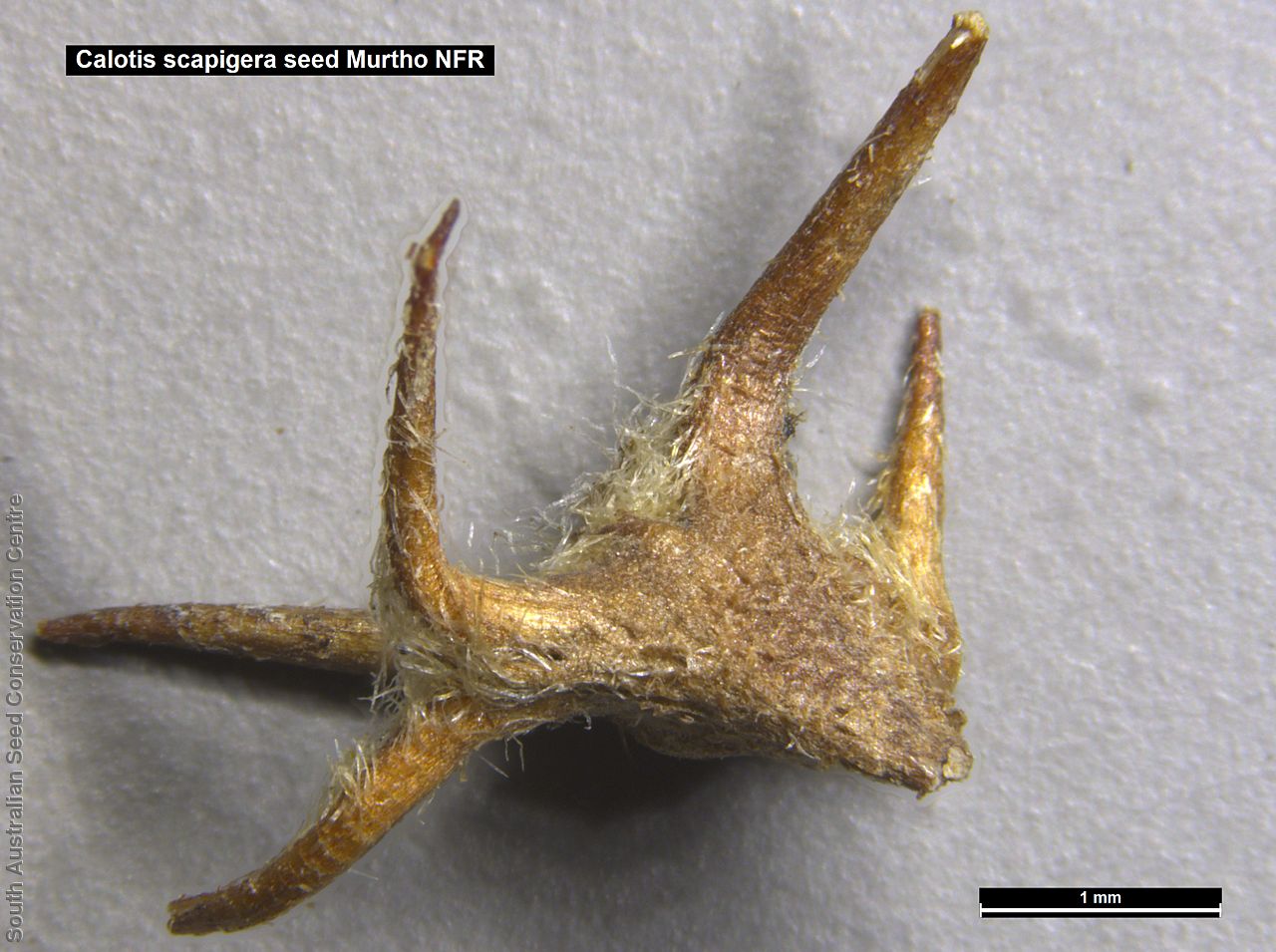
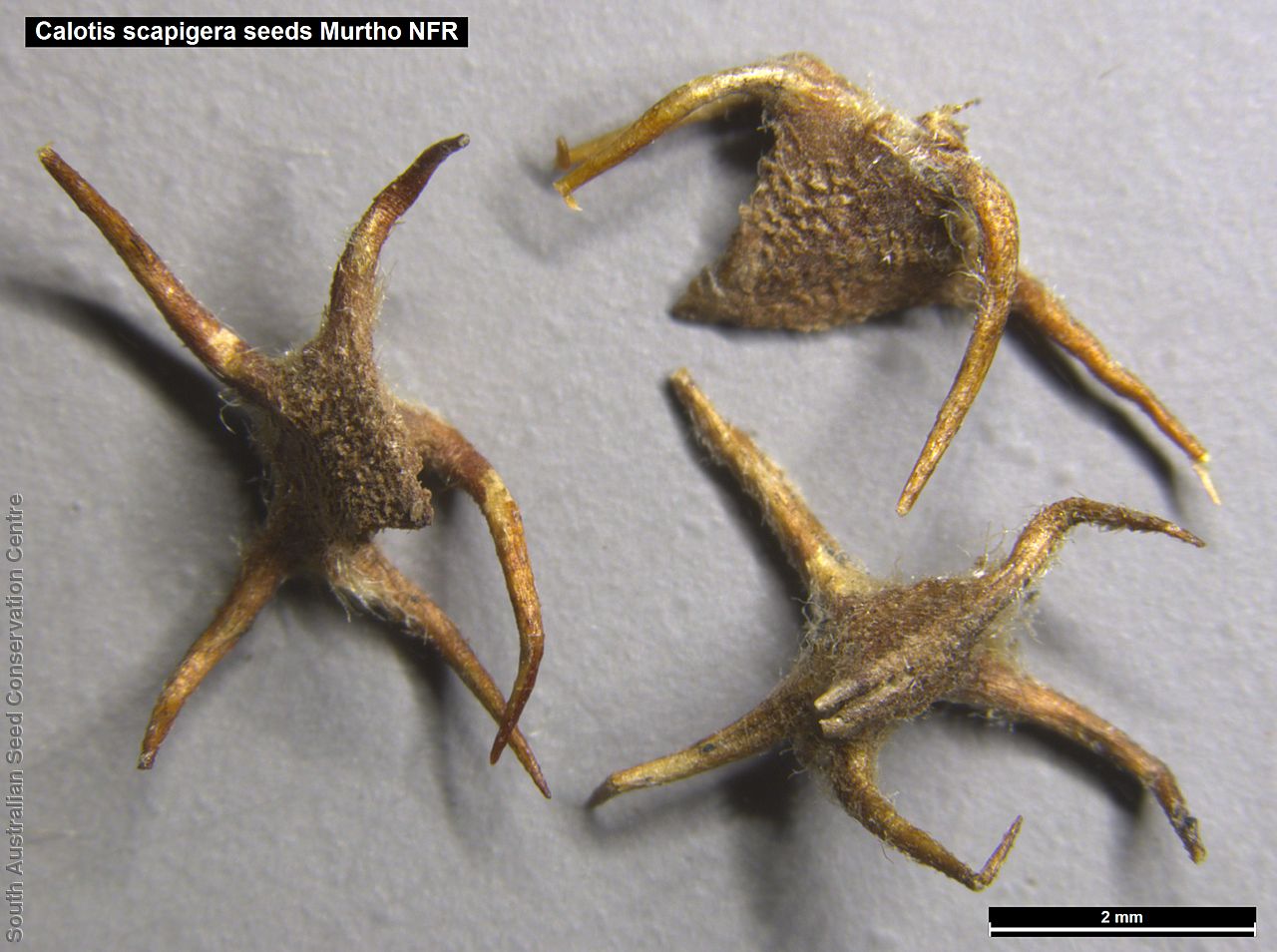


Botanical art
Prior names
Calotis scabiosifolia var. elongata
Etymology
Calotis from the Greek 'kalos' meaning beautiful and 'otos' meaning ear, after the first species named in the genus Calotis cuneifolia which has an ear-shaped pappus. Scapigera from the Latin 'scapus' meaning stem, stalk and 'gero' meaning to bear, alluding to the species leafless flower stalk.
Distribution and status
Found mainly along the River Murray in South Australia with some scattered records further north, growing chiefly in saltbush and river red gum communities, on damp clay soils in flood-prone areas. Also found in Queensland, New South Wales and Victoria. Native. Uncommon in South Australia. Common in the other States.
Herbarium regions: Flinders Ranges, Eastern, Murray, Southern Lofty, Green Adelaide
NRM regions: Adelaide and Mount Lofty Ranges, South Australian Arid Lands, South Australian Murray-Darling Basin
AVH map: SA distribution map (external link)
Plant description
Stoloniferous, perennial herb to 35 cm high. Basal leaves clustered, linear to lanceolate, margins entire or slightly toothed to 4 cm long and 9 mm wide. Stem leaves few, linear to lanceolate to 13 mm long and 3 mm wide. Flower-head solitary or rarely in a cyme of 2 or 3, ray florets white to lavender. Flowering between May and October. Fruits are brown round spiny fruit-head. Seeds are brown pyramidal-ovoid seed to 2 mm long with numerous hairy long spines at one end. Seed embryo type is spatulate fully developed.
Seed collection and propagation
Collect seeds between August and January. Collect mature seed heads that are dried and turning brown by picking off the heads and placing them in a paper bag. Be careful as the heads are spiny. Leave the heads in the paper bag to dry for at least a week. No further cleaning required if only the heads are collected. If other material were collected, use a sieve to separate the unwanted material. Whole heads can be stored with a desiccant such as dried silica beads or dry rice, in an air tight container in a cool and dry place. Seeds are non-dormant, viable seed should germinate readily.
| Location | No. of seeds (weight grams) | Number of plants | Date collected | Collection number Collection location | Date stored | % Viability | Storage temperature |
|---|---|---|---|---|---|---|---|
| MSB | 10,800 (14.16 g) | 30+ | 1-Dec-2006 | RJB70703 Murray | |||
| BGA | 2,300 (3.37 g) | 17-Oct-2006 | Murtho NFR Murray | 1-Aug-2007 | 50% | +5°C, -18°C | |
| BGA | 230 (0.35 g) | 31-Jan-2007 | DJD758 Murray | 1-Aug-2007 | 45% | -18°C | |
| BGA | 10,000 (20.65 g) | 50+ | 11-Jan-2012 | DJD2328 | 1-Nov-2012 | 71% | -18°C |
Number of plants: This is the number of plants from which the seeds were collected.
Collection location: The Herbarium of South Australia's region name.
% Viability: Percentage of filled healthy seeds determined by a cut test or x-ray.